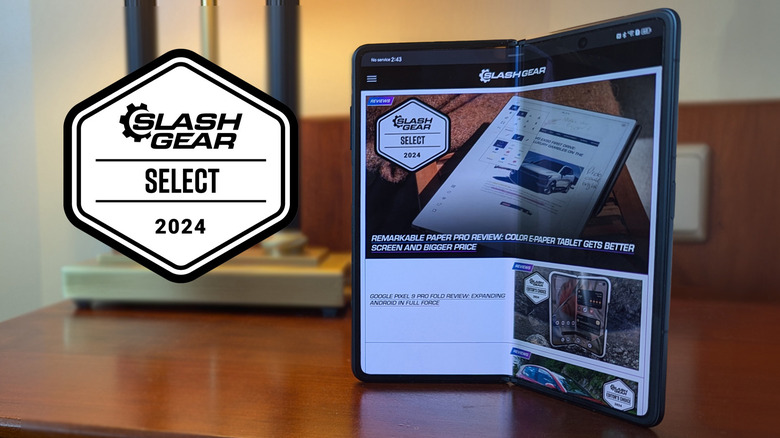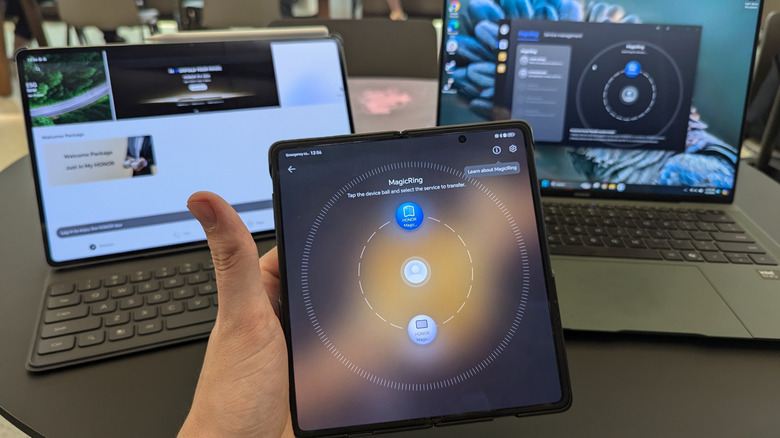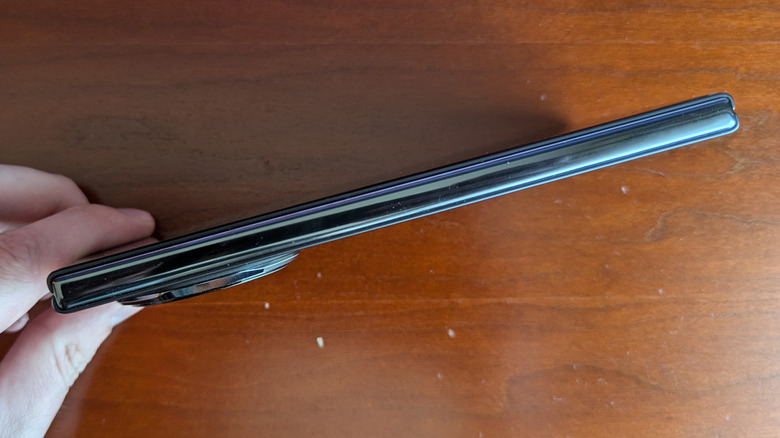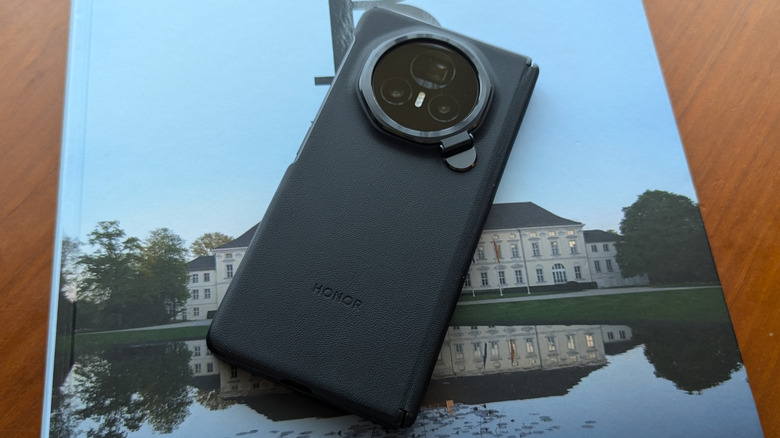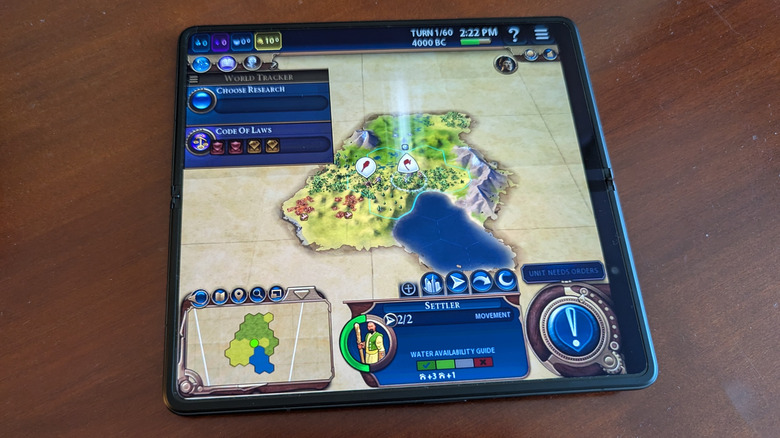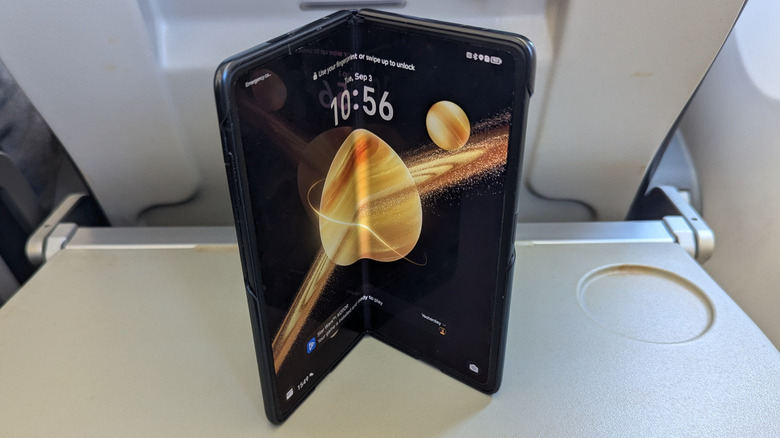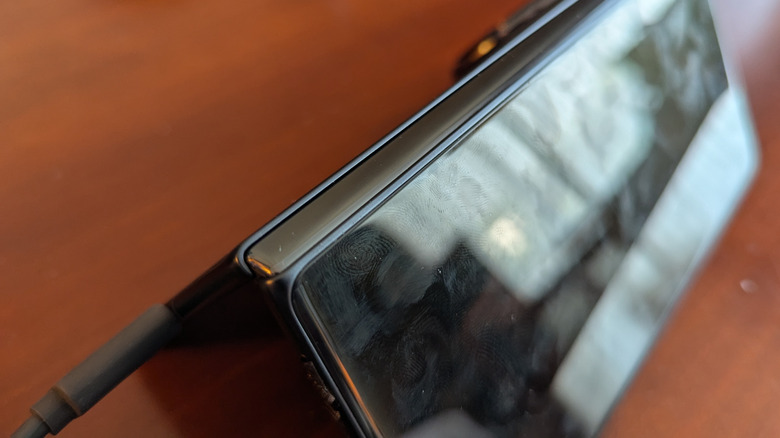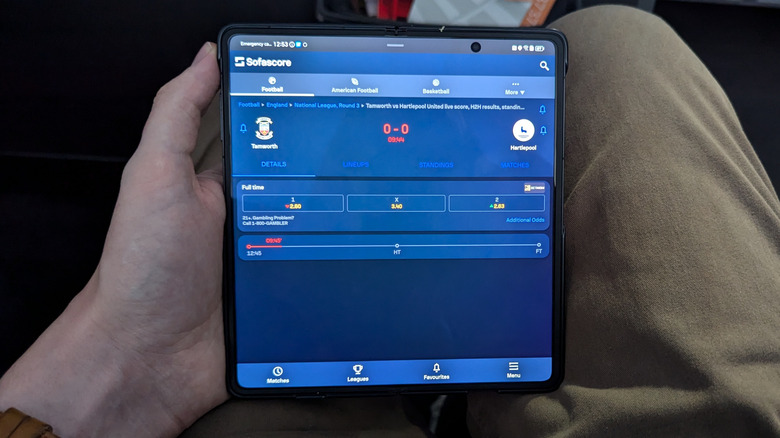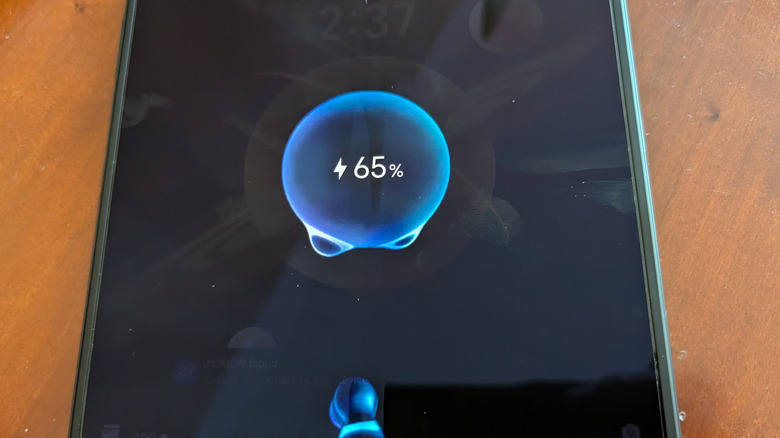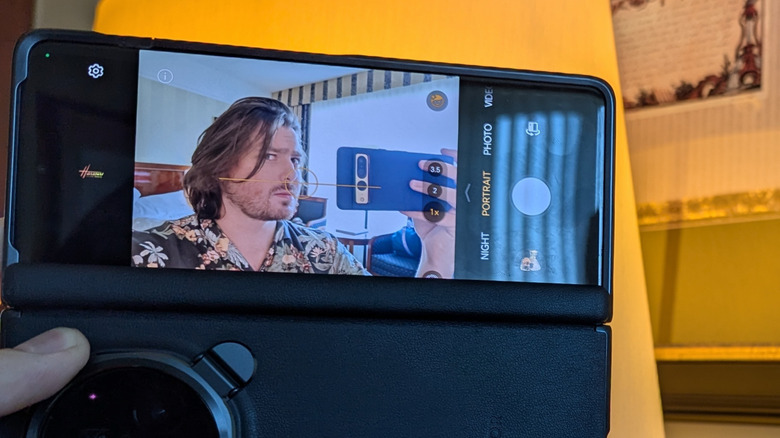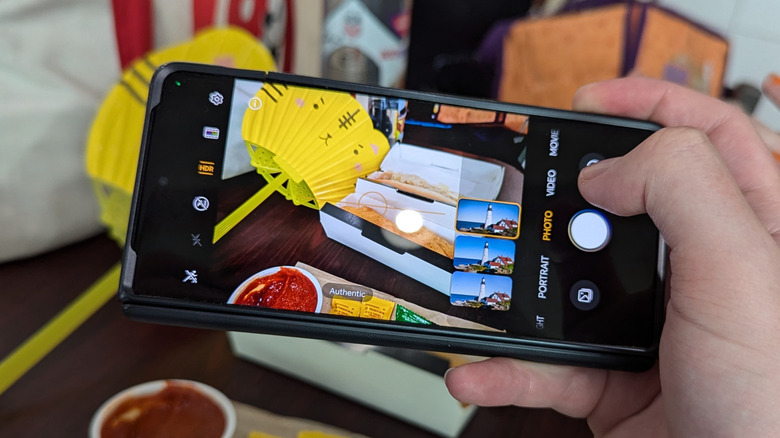Honor Magic V3 Review: Foldable Finesse With One Software Hiccup
- Durable Industrial Design
- Excellent Cameras
- Extremely Fast Battery charging
- Unbelievably Slim and Light
- Water Ingress Tested (IPX8)
- Finicky Software Ecosystem
- Randomly Factory Resets Without Reason
- No Solid Ingress Protection (IPX8)
- Considerable Price
We're still in the early days of folding phones, but things are rapidly advancing. The first Samsung Galaxy Fold is only five years old, and that was the first mainstream model. Google has its own efforts, rumors regarding an Apple folder have been abound for a long time, and there's even entry-level options from companies like Motorola.
But what about other mid-level brands? Chinese company Honor has already released two foldables, and has just announced the Magic V3 — its third take on the flexible smartphone-tablet hybrid.
Honor is certainly talking a good game, boasting of a revolutionary battery system, several AI features, and the sort of hardware that sets a flagship apart from most standard offerings. Honor provided a Magic V3 review unit to me for testing in order to deliver a full review to you. I've spent the last couple of weeks using one, and this is what I've managed to deduce.
Honor's Ecosystem is surprisingly good when it works
One of Honor's big selling points is "Magic Ring," an ecosystem that allows devices in close proximity to connect with each other via Bluetooth or your WiFi network. This is great for sharing things like files, controlling devices somewhat remotely, screen sharing, and various other tasks.
It's worth noting that I did end up having issues with Magic Ring when traveling with several Honor devices. From what I can gather, it all worked seamlessly on my home WiFi, but ran into issues once it had to rely on Bluetooth.
In terms of AI, Honor is one of the companies that is putting a lot of resources into that particular department. This is unsurprising, as AI-powered smartphones are generally seen as the next big thing within the industry. The company still relies on Google for a lot of tasks, but a proprietary Honor AI assistant is built into the phone. You can also search through Magic Ring, which is a bit like Google Lens crossbred with the loop tool from Photoshop.
There are also "AI Suggested Apps" which uses context to deduce what app you may want to use. Though for the most part I ended up ignoring that one, as I arrange my front page in a way that makes my most commonly used apps pretty prominent.
Honor's AI offerings aren't going to dethrone Samsung or allow them to go head to head with Google any time in the near future. In fact, a lot of the phone's features use Google's tools. However, it is an area where Honor is likely to show rapid growth if the company stays true to its goals. I would also say, Honor's Magic Ring system is smoother than both Google and Samsung's efforts when it works. Catch it on a good day, and it's pretty much Apple level when it comes to connectivity.
Light and sleek industrial design
The Honor Magic V3 is just over 0.35 inches (9mm) thick, and weighs less than eight ounces. That's pretty thin and light for a non-folding phone and, as Honor revealed/suggested at IFA 2024, it's currently the thinnest foldable phone on the market. It narrowly beats the otherwise-thinnest-foldable on the market today, the Google Pixel 9 Pro Fold, which comes in at 0.4 inches (10.16mm) thick (and 9.1 ounces, with nearly the same-size displays).
It's so compact that even with the case on I regularly confused it for my daily driver, a Google Pixel 7 Pro, during the testing period. It also felt pretty good in the pocket, substantial enough for you to know it's there while not intrusive at all.
The external screen measures 6.43 inches — which is fairly standard for a modern smartphone. Unfold it and that expands to an almost square 7.92 inches for the internal display. One and a half inches (measured diagonally) may not sound like a lot, but it makes a massive difference in terms of screen size — twice the display, as it were. The surface essentially becomes a small tablet, as a folding phone should, when you open it up.
As for the seam, it is definitely there, it's visible, and you can feel it when you run your finger over the center of the phone. But if you look at it square on, and the display is active, that seam completely disappears. It's definitely well implemented and I'd imagine as good as you can possibly get with current-gen folders.
One obvious bit of compromise is the finger print scanner. It's on the power button, and a touch finicky. Whether Honor opted to go that route instead of the increasingly common and objectively better under-screen scanners isn't immediately obvious. It may be cost, it may be something to do with getting it to work under the folding screen, but it's a sore miss either way.
Hearty as a foldable gets
Physics usually dictates that you have a choice between hardness and flexibility when it comes to materials. This doesn't seem to apply to the Magic V3's inner screen. There were a few occasions where I managed to get a good amount of sand between the inner screens, and the silicone-spattered device then spent most of the day in my equally sandy pocket. Sand comes in at a hefty 7 on the Mohs Hardness Scale, which is why sandpaper can make light work of things like wood and steel. At the time of writing, the inner screen of the Honor Magic V3 I'm testing doesn't have a scratch on it.
I wasn't purposely grinding sand or any other abrasive material into the phone, as you can destroy anything if you try hard enough. However I did subject it to situations a normal person may reasonably encounter. So it spent time in there with my trusty pocket sand, some keys, another phone, and some loose change amongst other things. It was pitched into a car cup holder that had some random debris flying around in it, dropped on a bathroom floor, and managed to fall off an end table and onto some wooden flooring. On close examination, it could do with a bit of a clean but I see no actual damage to the device itself.
Honor also includes a plastic and pleather case, which I attached as soon as I got the phone. The back clips on, like most phone cases, while the front is held in place with a bit of double sided tape. It's nice of Honor to include a case, as one may be hard to find for this particular device.
There's an adequate amount of gaming grunt
I could take this opportunity to rattle on about the processor, or mention how much RAM it has again, but that's a waste of virtual ink to be honest. It's a flagship phone, and for any decent flagship, the bottleneck is the Google Play Store — and it has been for a while. The Honor Magic V3 has enough grunt to play anything Google can currently throw at it, and looking at the specs that's going to be the case for many years to come.
With mobile gaming, you'll really spot a difference in two areas. Heat and battery life. You may be pleased to hear that The Honor Magic V3 does not turn into a literal hot potato once you put it under a bit of stress. The Snapdragon 8 Gen 3 processor is also pretty efficient, which helps it not get excessively hot and stretches out the life of the 5150 mAh battery.
The fold out screen is also a major bonus, particularly if you like turn based RPGs and strategy games. I've had "Rome: Total War 2," the first couple of "Baldur's Gate" games, and "KOTOR" sitting in my Play account for years because the experience on a standard phone screen is simply awful. On any other (smaller) phone, you can't read the text, your clicks are vague, it's all very poorly optimized. This isn't the case on the Honor Magic 3, just unfold it and enjoy your gaming experience.
Perfect to pop out on a flight
People who travel a lot for work will know how much of a pain digging a laptop out of your bag, setting it up, and getting to work is. Plus, you'll be right in the groove, getting things done, and the captain will immediately come on the intercom and tell you to put your large devices away because you'll be landing soon.
A tablet is kind of a sweet spot here, as you won't get bellowed at for storing that in the little pouch behind the seat in front of you. But even that only gets you a few extra working minutes.
The Honor Magic V3 on the other hand is absolutely perfect for this kind of situation. When unfolded, the screen is large enough to comfortably type on, and you can keep typing as the wheels touch the runway. It's also right there in your pocket so you can pull it out at a moment's notice and work away if inspiration suddenly takes hold.
You can of course do this with a regular phone, but if you have larger hands then typos are a certainty. Once you've spent some time rattling away on that larger keypad, it's very difficult to go back.
It may not be totally dust proof
During the testing period, I happened to spend a bit of time driving side by sides through a desert and over some sand dunes. That's far beyond a usual use case, but it did reveal what may be a flaw in the Magic V3's construction. In this sort of situation, sand gets absolutely everywhere, and that includes inside the folding phone you happen to be testing.
I believe the sand entered through the gaps where the screens meet the hinge, and the sound suggested it may have met the hinge itself. There was definitely something crunching every time I opened and closed it for a while, and you can still water/dustproof vital electrical components while leaving purely mechanical things like a hinge somewhat exposed.
The sand either dropped out or was ground into a fine powder within a few days, but this may not be ideal. If you introduce something hard and abrasive to a moving part, it's going to reduce that part's lifespan to some degree. As far as how much damage was done, I'm not sure and it may actually be negligible. Time may possibly tell, but for now the phone's functions seem unhindered. Honor promises its hinge can withstand over half a million folding cycles, sans-grit, and I'm not sure I can be bothered to count all of those out.
But given that 500,000 openings and closings probably requires years of daily use, something tells me an electrical component will give out before the device's hinge. Even if I did get dirt in it. So don't worry too much about taking the Magic V3 to the beach, or having it around while you're tackling some particularly dusty DIY. IPX8 waterproofing also means the folder can handle half an hour submerged to a depth of around five feet, so it probably handles water better than it does sand (the X means "not tested" for solids).
One fairly important flaw
While the dust in the hinge incident was a fairly minor concern, I did encounter a bigger issue while testing the Honor Magic V3. The phone performed a factory reset completely out of the blue one morning. I hadn't prompted it at all, it just happened. This was followed by a second glitch which prompts you to enter a password during setup, before you've had a chance to set said password. You can work around that second glitch by tapping the screen until it just lets you through, but the first one is more of an issue.
A quick Google showed me it's been a rare but persistent problem with Honor's former owner Huawei's devices for a while. Before this I was happy to strongly recommend the Magic V3 as a daily driver, but this has introduced a small yet prominent sliver of doubt.
Given that you use modern phones to store credit cards and authenticate logins, your main device deciding to randomly wipe itself is a major problem that could leave you in deep trouble. As I said, it's a rare glitch, and not something that would dissuade me from recommending the phone entirely. But it is about as bad as things get, and on a personal level I'd make sure I had some sort of backup in place in case said rare glitch happened again.
You can charge it up in no time
Honor has sacrificed what could have been exceptional battery life in an attempt to make their flagship phone as slim and light as possible. In theory, the extra battery life may have been handy, particularly when you consider the phone can act as a battery bank when one of your friends needs some charge. It can even charge other phones wirelessly.
But after using it for a few weeks, I actually support Honor's decision. This foldable is barely thicker than your average hero phone — again, fishing around in my pocket, luggage, or carry-on backpack I struggle to tell the difference between this and a Pixel 7 Pro. That takes away one of the most major strikes against foldables in general.
As for what you do get, that depends on what you're using the phone for. A processor-intense game will drain it within a few hours, but general usage will see the phone run all day without issue.
Charging the device is also staggeringly quick, especially if you have something it can draw a full 66 Watts from (or 50W if you're charging wirelessly). Honor puts this down to the device's "Third-generation Silicon-carbon Battery" and it is an absolute lifesaver if you have to cram a day's worth of charge in there during a limited charging opportunity. It is worth noting that the phone will only go all out when you unfold it, presumably so the heat dissipates more efficiently and the battery is protected. Beyond excess heat being generated, properly implemented fast charging systems aren't likely to damage your phone, so this is an all round great feature from Honor.
The cameras are very good
Honor's Magic V3 sports three cameras on the back, one on the front and another one on the inside — with the front and inside cameras existing for selfie purposes. You can also take selfies with the back camera quite easily, as you have the "front" screen right there when the device is unfolded. If you're a big fan of taking pictures of your own head, then this may be your dream phone.
In terms of resolution, both front lenses are 20MP Wide Camera (f/2.2), with the three on the rear being 50MP Wide Camera (IMX906, 1/1.56", f/1.6), SMA, 50MP Periscope Telephoto Lens Camera (f/3.0), and a 40MP Ultra Wide Camera (f/2.2) respectively. They all have various features to help you take that perfect shot, and performed very well in most situations. The Telephoto lens is particularly useful when you're shooting something far away.
With all of that being said, we've reached an age where even cheaper phones can take superb shots in ideal conditions. The true test of any camera is how it performs at night time, especially when there are numerous light levels to balance.
The Honor Magic V3 really doesn't let itself down here, I managed to take a nice shot of a cake, on a jetty with harsh lighting, during a very dark evening. It's a tough test, and Honor's 'new flagship did well enough to meet most people's needs. If you zoom in, it isn't truly pin-sharp, so I can't call it perfect. But it's more than enough for something you're going to slap on Instagram, Facebook, or whatever they're calling Twitter this week.
Above and below you'll see a couple more example photos captured with the Honor Magic V3's back-facing camera array.
Wrap-up
This is an absolute cracker of a phone, and Honor have very nearly knocked it out of the park with this one. Unfortunately, and as is often the case, the few snags are essentially software related. The random factory reset really dented my faith in the device, and as outstanding as many of the Magic V3's features are, reliability is the main thing you need from a device you rely so heavily on.
The issue may be rare, and it's definitely something Honor could patch. As far as hardware goes, this is one of the best folders on the market at the moment. Honor's very smooth and rapidly growing ecosystem also adds to the appeal, even if signing up is a bit clunky for United States-based customers. Getting hold of one in the U.S. may also be somewhat of a challenge.
It's worth noting that it will work if you import one, just so long as you've checked that your carrier will support its given radio coverage — which is fairly vast. Given the solid hardware and amount of potential Honor are showing, it might be worth looking into. If you're in a non-United States market, Honor's folding phone is certainly worth strong consideration, and might be a good gateway into their developing ecosystem — see our Honor Magicbook Art 14 Review to see a bit more on that situation.
That is, if you can stomach the price at approximately 1,999 Euro (this converts to around $2,218 U.S. Dollars as of September 5, 2024).
